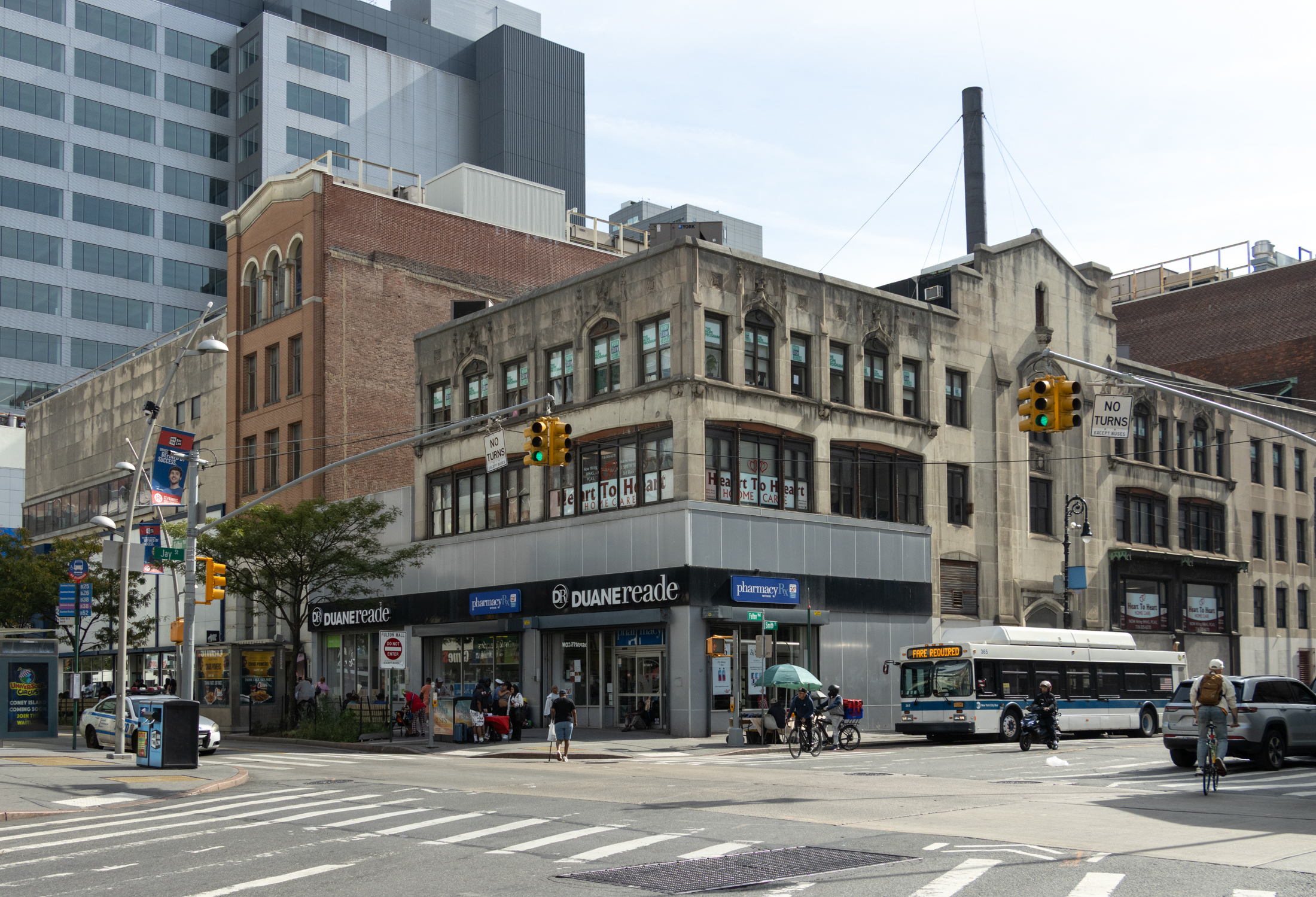Voices from the Atlantic Yards Debate
Last Thursday night, NewsHour with Jim Lehrer ran a segment on the Atlantic Yards debate, interviewing a number of the key players and voices on either side. Here are some excerpts: Marty Markowitz, Borough Pres: Sports have a way of infusing the municipality in which it’s in with that pride, that spirit. And we have…
Last Thursday night, NewsHour with Jim Lehrer ran a segment on the Atlantic Yards debate, interviewing a number of the key players and voices on either side. Here are some excerpts:
Marty Markowitz, Borough Pres: Sports have a way of infusing the municipality in which it’s in with that pride, that spirit. And we have lots of spirit in Brooklyn, you know that. I mean my attitude is if you don’t live in Brooklyn, forget about it.
Bertha Lewis, Acorn: It’s the most far-reaching housing agreement that’s ever been reached in this country. No one else has 50-50 — no one. It’s exhilarating and it is scary
Candace Carpenter, DDDB: They are asking for $2 billion in subsidies, which are taxpayers’ money, that will be utilized to line Ratner’s pockets. And we don’t have any input.
Laetitia James, City Council: It basically says things like good faith effort. It says things like, “we will try.” It says things like “we will consider.” It says things like “we will work with the government.” That’s not an ironclad agreement.
Jim Stuckey, FCR: There might be a need for eminent domain; there might be a need for condemnation; that is something that the state will decide.
Vince Burns, Tenant: If they wanted to take down my building to put in a police station or school – I’d had to leave where I am because I love the place — but I’d understand that – I mean, that’s fine — but this project is about one very wealthy man who wants to become wealthier by, you know, kicking me out.
Developing Brooklyn [PBS NewsHour]





I’m doing my best to respond, but it seems within a day or two of each headline posting here, people have moved on to newer things to comment about. I think you and I are the only people left on this subject on this particular headine.
I think if the Ratner plan wasnt proposed people wouldnt support the Extell plan – but we’ll never know.
Let me say that I find it interesting that I answer all the questions posed to me but my legitimate questions for the opposition are universally ignored
Have you seen the AYDW plans? A majority of the community agreed that they were a good use of the space, and they included housing and park land. Tish James was part of the process for the creation of them, and they were the basis of the opposing Extell plan. It was a financially feasible plan as well as what the community wanted.
The thing that is dubious is Ratners’ dealings with the MTA. Fair market value is also a bitter concession to someone that is forced from property they own for a private developers for-profit project.
3000 units is not low density, it is essentially R8, the same high density that 4th Avenue was recently changed to.
Are you so naive that you belive that Ratner is going to follow through with any of his promises if something else will provide him more profit? Where have all of the jobs gone in his proposal now that he has control of the site?
There is nothing “dubious” about the legal process of eminent domain; further NO-ONE will be stealing anything – Eminent Domain requires that fair market value be paid; Based upon the $ Ratner has already paid, fair market value should be quite a princely sum.
Further I think you are naive if you think that the same people wouldnt be protesting if the proposal was for 3000 units, not to mention the arena.
I think the only thing people might not get worked up about would be more Brownstone type houses (of course the architecture would have to be up to ok also). People may say now 300 units are ok, simply b/c they are proposing 6000. If they proposed 3,000, people would say we need a park. Please cite for me one major development(1000+ units that the “community” was for anywhere in this city in the last 20 yrs.
BUT what people dont want to accept is that it is not financially feasible (or desireable) to build a platform over the rail yards for a small # of units – Nor does it make ANY sense from an urban planning point of view to build low density across the street from a huge transportation hub.
And lastly in relation to pollution, traffic, crime etc in downtown brooklyn the difference between 3000 units and 6000 units will not make the slightest difference in an area that hundreds of thousands are living, working and passing through on any given day.
Since I was the person who voted for the “Rent Is Too Damn High’ party, I think I should mention that a protest vote is a protest vote, and that none of the racist rhetoric you mentioned was on any website or promotional materials when I voted.
Additionally, I think you are missing a significant point David. Most people you would call Anti-Atlantic Yards are in fact Pro-Atlantic Yards development, but Anti-Ratner and his shady dealings. Everyone wants to see housing on those ugly rail yards, a lot of us just want it to be done ethically, without the removal of residents by dubious means.
Is the greater good 6000 units built on stolen land with such density that pollution, traffic crime, etc. in downtown Brooklyn increase exponentially? Or is the greater good 3000 units built to conform with a growing neighborhood and built on an underused piece of land sold at a fair market price?
Never heard of her until a few days before the election. Never voted Green in my life. I voted for her because of her anti-Ratner stance, although I knew in advance she would lose. However, if the whole AY thing didn’t exist I would have voted for anyone but Marty Mrkowitz anyway — that man is an embarrasment. Brooklyn doesn’t need a buffoon/cheerleader as borough president, but an intelligent, capable, creative chief executive, even if it is an essentially powerless position.
Can we have a little spin from both sides here
turnout for Mattera in BoroPres race (being that she ran as anti-Ratner-Atlantic Yards)?
Also must through in that I think BoroPres is pretty meaningless/powerless position.
But Dan let me ask you a question – under what theory could you distinquish AYs from the language in the Kelo decision – and assuming no additional legislation can you really argue that displacement of so relatively few residents and biz relative to the huge number of new residences and biz (not to mention promised affordable component) isnt w/in ‘public good’as outlined in Kelo and Berman.
But Dan let me ask you a question – under what theory could you distinquish AYs from the language in the Kelo decision – and assuming no additional legislation can you really argue that displacement of so relatively few residents and biz relative to the huge number of new residences and biz (not to mention promised affordable component) isnt w/in ‘public good’as outlined in Kelo and Berman.